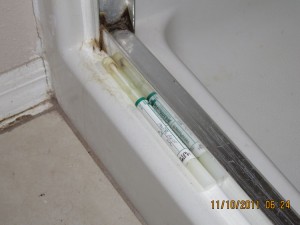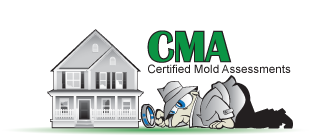 The average homeowner makes thousands of decisions every year, from maintenance and utilities to renovations and repairs. Keeping our homes running smoothly involves thinking ahead and being aware of minor issues before they develop into major problems.
The average homeowner makes thousands of decisions every year, from maintenance and utilities to renovations and repairs. Keeping our homes running smoothly involves thinking ahead and being aware of minor issues before they develop into major problems.
Mold is a prime example. We all know that large scale mold invasions are something that can creep up on us, slowly taking root in places we can’t see. We all know mold presents serious health risks, as well as financial risks to our properties. Most homeowners also have a general idea of where mold likes to grow, and how it makes use of specific environmental conditions. All of this is valuable information in terms of preventing residential mold problems.
But the truth is, mold has many hiding places. Many homeowners are sometimes unaware just how sneaky mold can be. By the time the invasion is discovered, it’s already become a problem that has to be dealt with professionally.
Step up your level of mold prevention awareness by getting familiar with this list of mold’s lesser-known hiding places!
1. Window sills
Condensation often gets trapped in various parts of your window fixtures, especially in older homes. This often leads to mold growth over time, unless the windows and window sills are cleaned regularly. Remember—mold likes moisture, so if you regularly see condensation on your windows, it may be time for a cleaning (or an upgrade).
2. Humidifiers
Many people sleep better when the air is humidified. This is especially true for people who commonly suffer from dry sinuses. The down side? Your humidifier is a warm, moist breeding ground for mold spores. If it isn’t taken apart and cleaned regularly, it can literally become a cannon for mold spores.
3. Air conditioners
These amazing appliances keep us cool, and running them regularly can actually help prevent mold. But don’t get forget to clean your A/C regularly and subject it to professional maintenance—including the duct work. Mold spores have been known to sneak into various components of your residential HVAC system.
4. Refrigerators
Most models come with a drip pan that collects condensation and food particles. These often go unnoticed for months or even years at a time, and it’s not a pretty sight. When mold grows in sneaky places like this, it can move to other areas of the kitchen as well.
5. Chimneys
Humid, moist and dark—chimneys are often the perfect places for mold to grow. The answer? Regular chimney sweeping at least once a year. If it gets out of hand, you may need to call a mold remediation specialist.
Keeping mold in check
Knowing the most common places to find mold is, of course, very important in terms of prevention. But no strategy is complete without a working knowledge of commonly overlooked places that result in costly mold remediation efforts. If you do contract with a professional—whether to test your environment for mold or deal with an existing problem—just make sure you deal only with the most reputable mold specialists.

